#Harlem Line
Explore tagged Tumblr posts
Text

Voters in the 18th Congressional District (East Harlem), line up outside a polling place on Fifth Ave., between 111th and 112th Streets, to cast their vote, November 2, 1948. The district was the scene of a three-way fight for the House of Representatives seat of Rep. Vito Marcantonio of the American Labor Party. He was opposed by John Ellis, Republican-Liberal candidate, and John P. Morrissey, Democratic candidate.
Photo: Anthony Camerano for the AP via WTOP
#vintage New York#1940s#Anthony Camerano#voting#Election Day#voters#voting line#Nov. 2#2 Nov.#East Harlem#VOTE!#Vito Marcantonio#vintage Harlem#1940s New York
68 notes
·
View notes
Text
"there's a lot of darkness in disco" is up there as one of the funniest things grizzly plays has ever said
69 notes
·
View notes
Text

From 2018: Looking down the tracks of the No. 1 line from West 135th Street, #Manhattan.
#nyc#Manhattan#no. 1 line#newyorkcity#new york city subways#elevated subways#Manhattan valley#Harlem
76 notes
·
View notes
Text
Just wanted to share this amazing experience from last night's Soul Train Tribute to Luther Vandross. We kicked off the free outdoor screening of the Luther: Never Too Much documentary with a Soul Train Dance Line, and it was genuinely heartwarming to see so many people, including those using mobility devices, participating with such an upbeat attitude and joyful spirit.
It's reported that as high as 80% of non-traumatic lower limb amputations happen due to mismanaged diabetes. Regardless of how or why someone experiences a lower limb amputation, it can stop them from wanting to take care of themselves and their diabetes self-care in the future. Allowing these people to still participate in social events and gatherings could boost their morale. .. Moments like these remind me of the incredible resilience and determination of people facing challenges. Witnessing someone joining the Soul Train Dance Line on her scooter made me smile and brought back many beautiful memories of our past events.
I can't wait to return to more outreach events soon to spread positivity and help everyone glamorize good health!
#diabetes#divabetic#diabetic#health#type 2 diabetes#soul train#soul train dance line#scooter#wheelchair#wheelchair girl#wheelchair life#live music#dj#party#harlem new york
3 notes
·
View notes
Text

#Harlem Renaissance entertainer Gladys Bentley in 1930—a Black lesbian#cross-dressing performer who would do her act backed by a chorus line of drag queens#sad_eggy#oldschool
16 notes
·
View notes
Text
I’ve talked about this film a thousand times — I mean it’s a classic for a reason — but I will never get over what those first two lines do to me, or what this film says about what isolation does to people.
Heartbreak isn’t the only thing that made Rick stop caring about people or the war or the world. In truth is he never really stopped caring, but there’s only so much most of us can care in isolation: we burn out too quickly. Without support and community and people to make your life as an individual worthwhile, it becomes damn hard to force yourself to pay attention to society as a whole. Isolation can easily force us to take refuge in apathy.
Of course he cares, we can see it in his disgust for the Nazi party, in the way he helps that young couple escape, and his quiet pride in New York City being a place “I wouldn’t advise you to try to invade.” But Rick didn’t just lose Ilsa when he left Paris: he lost his home, his business, and his community, as well as Paris itself being held under German occupation. And that was after already being an expatriate, holding America at arms length even as he made it part of his brand. But then Rick comes to Casablanca — and not the Casablanca that is in itself a thriving metropolis of Morocco, but to the Casablanca where people from all over Europe are fleeing to escape the Nazis, most of them afraid, many in denial, and nearly all having lose their communities as they fled. People are desperate and lonely and frightened and searching for escape, either physical or mental. Despite being a wildly populous city, the Casablanca we see in that film is deeply isolating.
That’s why these lines are right next to each other. Because in briefly waxing nostalgic about his home country — I bet they’re asleep in New York — he opens himself up to the pain of connection, of having someone try to reestablish that connection, and making him confront just how much he still cares. About Ilsa, about his home, about people. And it’s that sense of care that drives him to (eventually) do what is right.
Anyway remember to take care of yourself and your community and to foster your relationships with those you care about. None of us can defeat fascism alone!
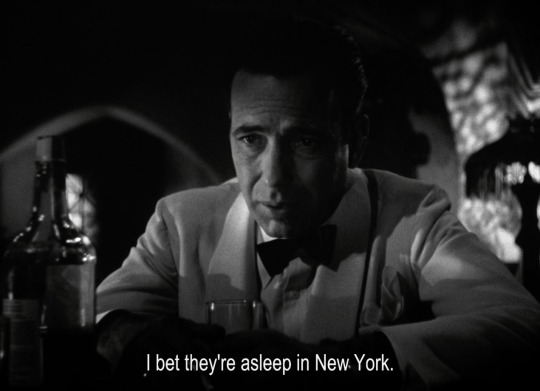

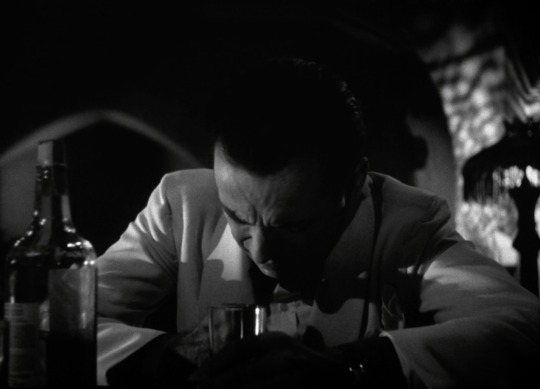
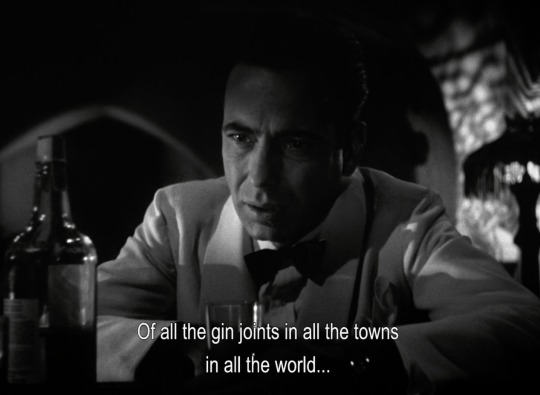

casablanca (1942)
#casablanca 1942#not me rambling about the line BEFORE a famous line from an 80 year old film#none of us can defeat fascism alone#sidenote: I still love the theory that Rick was an officer w the Harlem Hellfighters in WWI and that’s how he and Sam met
936 notes
·
View notes
Text
How do you take a photo of time?
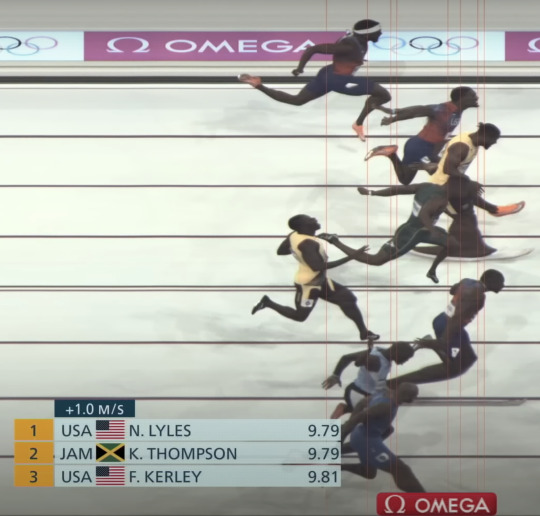
I've been watching the track events at the Olympics since I was a wee lad. It was a tradition in our family. We'd gather around our ancient low-definition 19 inch CRT television and watch tiny blobs compete against other tiny blobs and root for our country.
It was a bit like watching YouTube on your phone in 144p.
Several heroes emerged.
Jackie Joyner-Kersee was amazing.

You can't forget about Flo-Jo.
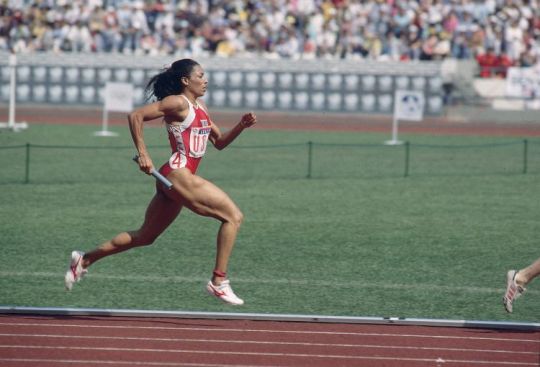
And then the Olympics decided NBA players were allowed in the competition.
Which formed... The Dream Team.
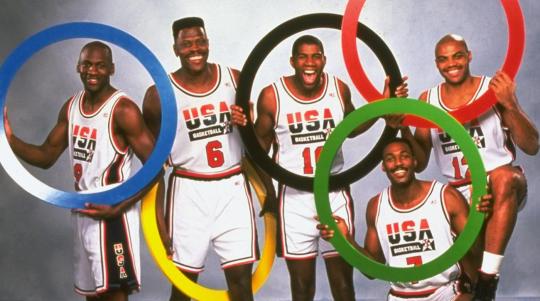
Was this fair?
Well... they won each game by an average of 44 points.
So... no. It was not fair.
Though it became more fair as time went on.
But, umm... yeah. The other teams looked like the Washington Generals and the US looked like the Harlem Globetrotters if they stopped screwing around half of the game.
But my absolute favorite Olympian was a runner named Michael Johnson.

He was cool as heck.
For one thing... gold shoes.
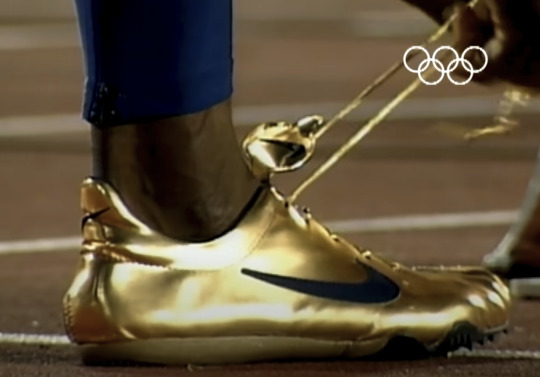
But he also had this crazy, upright, Tom Cruise-ish sprinting style that just made him look like a running robot on the track.

And in the 1996 Atlanta games he just trounced EVERYONE. I mean, it wasn't even close.
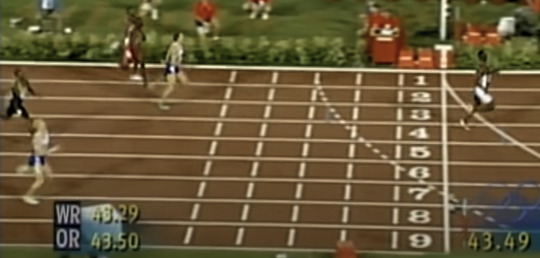
Yikes. Those losing blobs are probably really embarrassed.
Last night I decided to invigorate my nostalgia and watch the track events again. And I got to see one of the wildest races in history.
It didn't even last 10 seconds but it was one of the most exciting sporting events I've ever witnessed. Almost every runner won the race.
After I saw that initially, I was like... who the heck won???
Even in slow motion I wasn't sure.
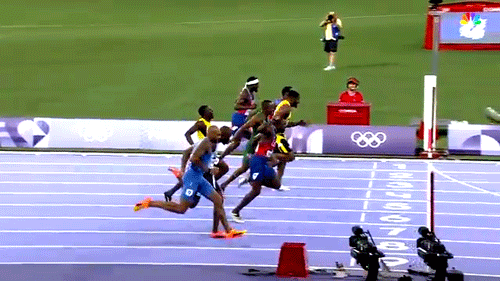
This was one of the closest finishes in history. There has never been a race where all 8 runners were within this margin.
The arena was silent as the winner was being confirmed. The runners just kind of paced around waiting for official word. My best guess was the Jamaican runner, Kishane Thompson. But then the loudspeaker announced Noah Lyles.

The last tiny morsel of American pride burst out of me with a big "Wooooo!"
I forgot what it was like to be proud of my country. I wish it happened more often. But this young man, despite being last place in the first 3rd of the race, turned on the afterburners and won in a photo finish.
And that's when my inner nerd took over.
Because when they showed the photo finish image, it looked super weird.
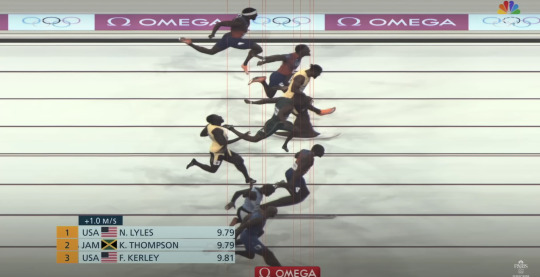
Why is the track white?
Why do all of the runners look all warpy like that QWOP game?
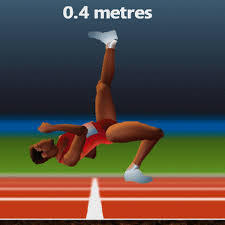
So I went down a research rabbit hole to figure this out.
Photo finishes are actually fascinating. The first photo finish captured the end of a horse race in 1890. But that was mostly luck and timing. The actual photo finish mechanisms weren't used until 1937.
Originally they would film the finish line through a physical slit.

And the first horsie head that appeared in that slit would be the winner. This technology ended a huge aspect of corruption in horse race fixing almost overnight.
But we have come a long way since then. And I'd like to introduce you to the Omega Scan 'O' Vision Ultimate.

This slow motion camera sits fixed on the finish line of every race. The concept of the photo finish has remained remarkably similar to the 1930s approach. The camera sensor is specially designed to only record a vertical slit.
Only the finish line itself is actually captured.
And because it limits what it records to only that slit, it can capture 40,000 frames per second to get amazing temporal resolution.
So why don't the photo finishes just look like, well... this?

That is because the camera takes a picture of time more-so than dimensional space. I guess it would be more accurate to say it *assembles* a picture of time.
As the runners cross the finish line, the camera combines all of the little strips of pictures into a single image.
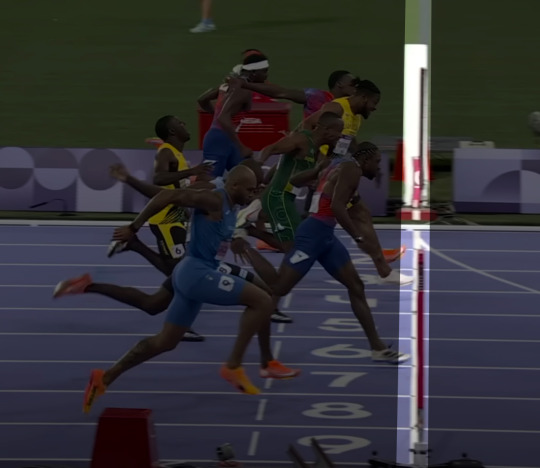

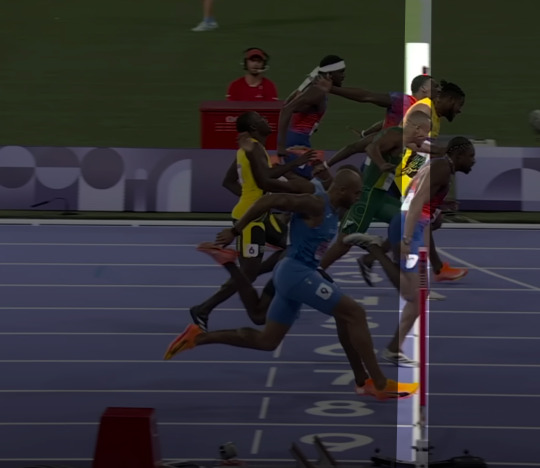
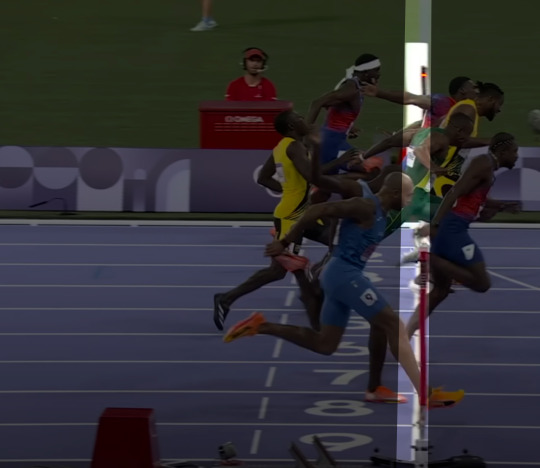
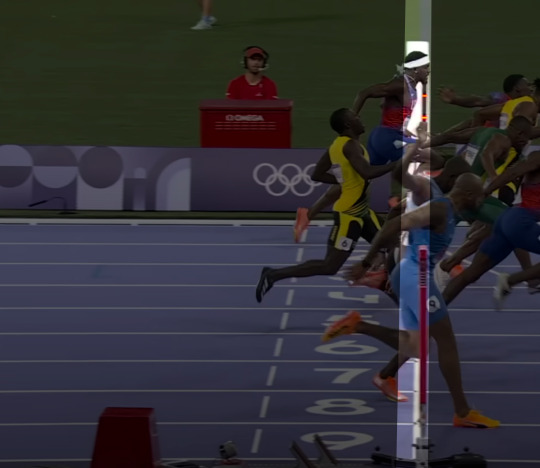

It's almost like if you tried to reassemble a piece of paper after it had been shredded.
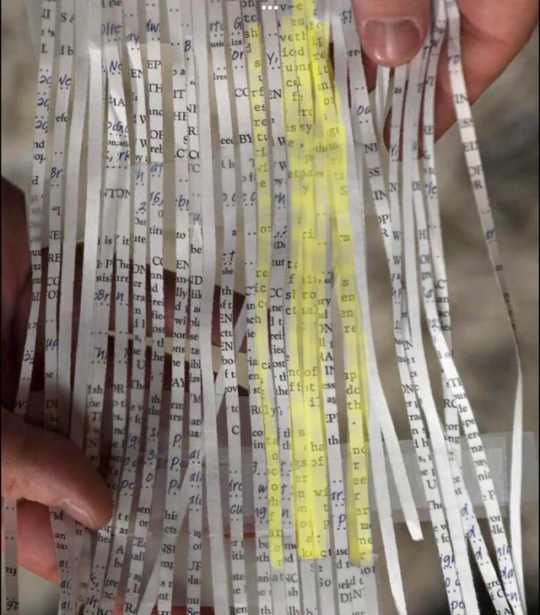
Imagine each strip of paper is a picture of ONLY the finish line, just at a slightly different point in time.
What if someone stopped on the finish line and didn't move... what would that look like?

Once they got there, the same part of their body would just be repeated.
So the right side of the photo finish picture represents earlier in time and it just assembles the image strip by strip as time passes and you literally get a picture of time itself.
NEAT!
Okay, but how do they determine the winner from the photo finish?
I mean, that shoe looks like it is ahead of Noah Lyles!
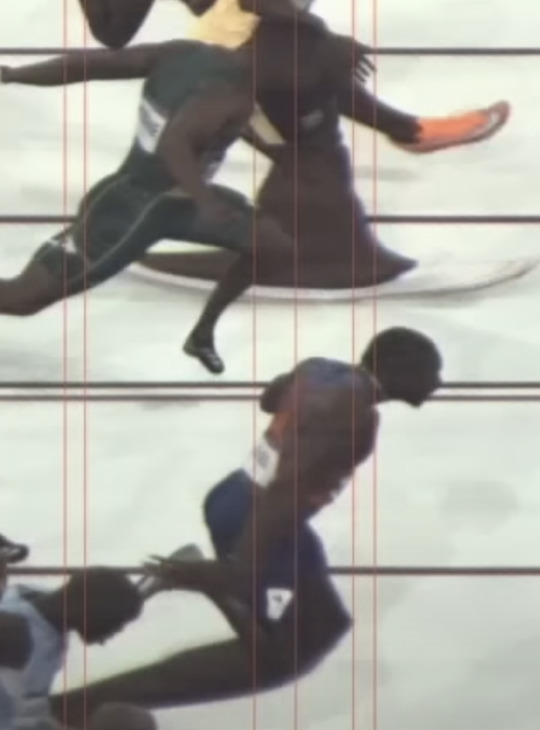
Clavicles!
The IAFF rules state the foremost part of the torso must cross the finish line first. And the endpoint of the torso is the outer end of the clavicle.
So if you get this bone across the finish line first, you win the race.
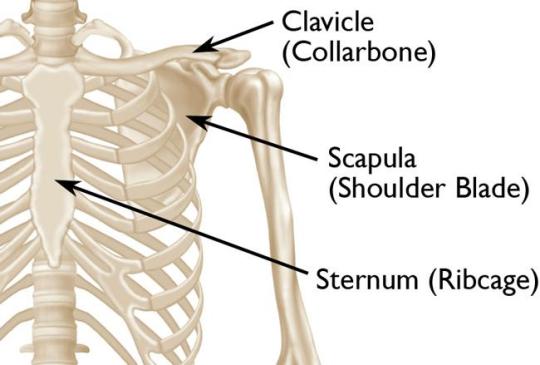
Two more fun facts!
The start of the race is actually just as carefully timed as the end of the race. There are sensors in the starting blocks of each runner.

The starting gun also has an electronic sensor.
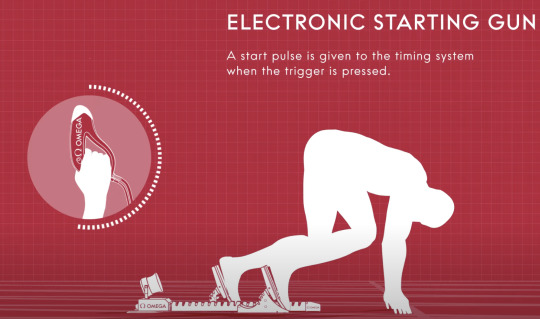
They have determined the fastest a human can react to the sound of a gun is roughly 100 milliseconds. So if you start running before 100 milliseconds they know you didn't actually hear the gun, you just got antsy and started running too early.
And the final fun fact...
Did you notice the Omega logo at the top of the photo finish?

That isn't superimposed or added after the fact. That is captured by the camera.
But if this image is composed only of tiny little slivers, how did they get the Omega logo to show up?
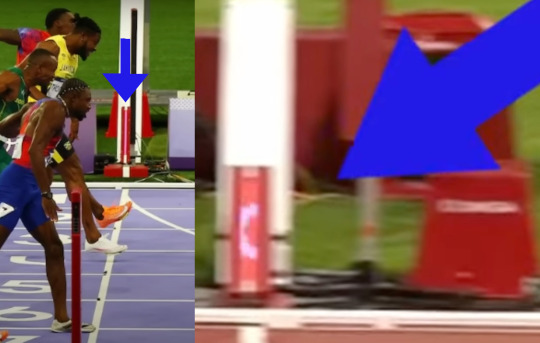
That is a little display. And it is synchronized with the Scan 'O' Vision Ultimate to show a little sliver of the Omega logo for each frame captured.

So when the final image is stitched together, it looks like a cohesive logo at the top of the photo.
Pretty clever, Omega!
26K notes
·
View notes
Text
youtube
#RYAN GARCIA CROSSED THE LINE & BRONNY JAMES NEEDS TO COME WITH US TO HARLEM! | S4#ryan garcia#mase#bronny james#cam'ron#Youtube
0 notes
Text
GRAND SLAM Releases New Single “Come Together (In Harlem)” and Music Video
GRAND SLAM Releases New Single “Come Together (In Harlem)” and Music Video. #grandslam @grandslamrocks
GRAND SLAM unleashes the video for “Come Together (In Harlem)”, the infectious third single from the new studio album, ‘Wheel Of Fortune’ – out Friday via Silver Lining Music. GRAND SLAM engages their talismanic, legendary founding energy with “Come Together (In Harlem)”, a moody, strutter of a song from the Phil Lynott days with (mostly) Lynott’s lyrics. “‘Come Together (In Harlem)’ is the…

View On WordPress
#Come Together (In Harlem)#GRAND SLAM#Hit The Ground – Revised#Laurence Archer#Mike Dyer#Silver Lining Music#Wheel Of Fortune
0 notes
Text

Kids stand in line at Harlem's RKO Regent movie theater on November 29, 1941.
Photo: Associated Press
#vintage New York#1940s#vintage Harlem#movie theater#movie line#Nov. 29#29 Nov.#Bad Men of Missouri#movies#1940s New York#vintage NYC
33 notes
·
View notes
Text

so i wasn’t able to catch the first one on camera but i want anyone who hasn’t played this game to know that not only is this line real and in the game but it also comes not long after a separate line directly referencing the Harlem Shake
1K notes
·
View notes
Text

Hint: If you ever encounter this puzzle in a crossword app, just [term for someone with a competitive and high-achieving personality].
A Crossword Puzzle [Explained]
Transcript
[A square 15x15 crossword puzzle is shown. Only 21 of the 225 squares are black. The black squares are in a pattern that are 180 degree rotationally symmetrical. Three black squares down from the 11th column and similarly three black squares up from the 5th column. Three black squares out from the right in row 7 and then two more black squares diagonally up from the end. Similarly three black squares out from the left in row 9 with two more black squares diagonally down from the end. A single black square is three above the first black square on the diagonal going down to the right and similarly there is a black square three under the first of the diagonal squares going down to the left. (Row 6 column 12 and Row 10 column 4). Finally there are three black squares on a diagonal crossing over the central point by going up from the left through the central point (Row 8 column 8). There are numbers at the top of every column (except the one that is a black square) and similarly at the left edge of all rows (except the one that is a black square). There are also numbers at the bottom of every black segment (except the one that reaches the bottom) and all rows after black segments except the one that reaches the right edge. In total all numbers from 1 to 51 is written. They are written in reading order from 1 to 51.]
1 2 3 4 5 6 7 8 9 10 11 12 13 14 15 16 17 18 19 20 21 22 23 24 25 26 27 28 29 30 31 32 33 34 35 36 37 38 39 40 41 42 43 44 45 46 47 48 49 50 51
[Below the square there are two rows of clues for each number that belongs to across (rows) and to the right there are one row of clues for each number that belongs to down (columns). Both segments have an underlined and bold title above the clues. ]
'''Across'''
1. Famous Pvt. Wilhelm quote
11. IPv6 address record
15. "CIPHERTEXT" decrypted with Vigenère key "CIPHERTEXT"
16. 8mm diameter battery
17. "Warthog" attack aircraft
18. Every third letter in the word for "inability to visualize"
19. An acrostic hidden on the first page of the dictionary
21. Default paper size in Europe
22. First four unary strings
23. Lysine codon
24. 40 CFR Part 63 subpart concerning asphalt pollution
25. Top bond credit rating
26. Audi coupe
27. A pair of small remote batteries, when inserted
29. Unofficial Howard Dean slogan
32. A 4.0 report card
33. The "Harlem Globetrotters of baseball" (vowels only)
34. 2018 Kiefer song
35. Top Minor League tier
36. Reply elicited by a dentist
38. ANAA's airport
41. Macaulay Culkin's review of aftershave
43. Marketing agency trade grp.
44. Soaring climax of Linda Eder's ''Man of La Mancha''
46. Military flight community org.
47. Iconic line from ''Tarzan''
48. Every other letter of Jimmy Wales's birth state
49. Warthog's postscript after "They call me ''mister'' pig!"
50. Message to Elsa in ''Frozen 2''
51. Lola, when betting it all on Black 20 in ''Run Lola Run''
“Down
1. Game featuring "a reckless disregard for gravity"
2. 101010101010101010101010 [sub]2→16
3. Google phone released July '22
4. It's five times better than that ''other'' steak sauce
5. ToHex(43690)
6. Freddie Mercury lyric from ''Under Pressure''
7. Full-size Audi luxury sedan
8. Fast path through a multiple choice marketing survey
9. 12356631 in base 26
10. Viral Jimmy Barnes chorus
11. Ruby Rhod catchphrase
12. badbeef + 9efcebbb
13. In Wet Let's ''Ur Mum'', what the singer has been practicing
14. Refrain from Nora Reed bot
20. Mario button presses to ascend Minas Tirith's walls
24. Vermont historic route north from Bennington
26. High-budget video game
28. Unorthodox Tic-Tac-Toe win
29. String whose SHA-256 hash ends "...689510285e212385"
30. Arnold's remark to the Predator
31. The vowels in the fire salamander's binomial name
32. Janet Leigh ''Psycho'' line
34. Seven 440Hz pulses
37. Audi luxury sports sedan
38. A half-dozen eggs with reasonably firm yolks
39. 2-2-2-2-2-2 on a multitap phone keypad
40. .- .- .- .- .- .-
42. Rating for China's best tourist attractions
43. Standard drumstick size
45. "The rain/in Spain/falls main-/ly on the plain" rhyme scheme
773 notes
·
View notes
Text
Black History Month

A member of the Harlem Hellfighters (369th Infantry Regiment) poses for the camera while holding a puppy he saved during World War 1, 1918.
The Harlem Hellfighters was a regiment made up of decorated Black soldiers who fought as part of the French army because the U.S. did not allow Black soldiers to fight alongside white soldiers. The French accepted the Harlem Hellfighters with open arms and did not racially segregate them.
During World War 1, they fought on the front lines for 191 days, longer than any other American unit. And as a result, suffered the most casualties of any American regiment—losing approximately 1,500 men. Despite the heavy death toll and the poor replacement system, the Harlem Hellfighters never lost a trench or a foot of ground to the enemy; none of them became prisoners of war. Not only were they one of the most successful regiments of World War 1, but they also helped bring Jazz to France.
Upon returning home, the Harlem Hellfighters received a welcome parade in New York City; a privilege that was denied to them before they had left for war. However, the celebrations were short lived as the summer of 1919 became known as the Red Summer, in which the country saw some of the worst racial violence since the Civil War.
The Harlem Hellfighters who dreamed of returning home to a place that would finally treat them with respect and as equal human beings, quickly realized that nothing had changed at all.
#black history month#black history matters#black history is world history#black history 365#history#black is beautiful#black is gold#black is divine#black people#melanin#problack#interesting#facts#ww1 history#black excellence
1K notes
·
View notes
Text
The Battle of Manhattan didn’t go the way the Fandom thinks it did; we need to address the “massacre” of the Titan Army!
The Battle of Manhattan is the most pivotal event of the first series. And we see the entire thing exclusively from Percy’s point of view. He takes us through the thickest of the fight from one end of Manhattan Island to the next, and shows us a desperate fight of good against evil.
But we have another point of view for the battle, one that comes from the demigods of the Titan army, and one that informs us of a far different, darker side to the conflict. One where an entire army of children is massacred by the victorious Olympians, without a thought or even a care. It’s a shocking, confronting side of the struggle that most fans don’t seem to be aware of.
But it’s also completely inaccurate.
Now I love Alabaster; he’s one of my favorite characters, and I want nothing but the best for him. But he’s a demonstrably unreliable narrator. I don’t even mean that he’s intentionally dishonest; but he’s very badly misinformed about what actually happened. And that gives the fandom three major misconceptions that need to be cleared up.
Alabaster gets the casualty ratio for the battle wrong (the Olympians had more than he thinks).
The Titan army has far fewer demigods than most fans think (not much more than 50 at the most).
Alabaster does say that there was a “massacre” at the end of the battle, but most of the TA demigods had deserted before that!
Part 1) The Olympians Have High Casualties
“It was a massacre. If I remember right, my mother told me that Camp Half-Blood and its allies had sixteen casualties total. We had hundreds.” (pg 219)
This is the only time we get a specific number for Olympian casualties, but it just doesn’t match up with what actually happens in the books. Looking back at all the deaths we do see:
Charlie Beckendorf -1
one [Hellhound] got hold of an Apollo camper and dragged him away. I didn’t see what happened to him next. I didn’t want to know. (pg 182) -1
Michael Yew -1
A young dragon had appeared in Harlem, and a dozen wood nymphs died before the monster was finally defeated. (pg 203) -12
“We lost twenty satyrs against some giants at Fort Washington,” [Grover] said, his voice trembling. (pg 203) -20 Giants smashed through trees, and naiads faded as their life sources were destroyed. (pg 243) -1< Enemy archers returned fire, and a Hunter fell from a high branch. (pg 244) -1 Too many of our friends lay wounded in the streets. Too many were missing. (pg 257) -1< The flagpoles were hung with horrible trophies –helmets and armor pieces from defeated campers. (pg 282) -1< The Drakon lashed out, swallowing three californian centaurs in one gulp before I could even get close. (pg 288) -3 Poison spewed everywhere, melting centaurs into dust along with quite a few monsters, (pg 288) -1< The Drakon snapped up one Ares camper in a gulp. (pg 291) -1
Silena Beauregard -1
Leneus -1
a body covered in the golden burial shroud of Apollo’s cabin. I didn’t know who was underneath. I don't want to find out. (pg 303) -1
Oddly enough, we actually miss the moment that was probably the worst for the Olympians, the final push by Kronos that breaks through their line. After Clarisse slays the drakon and the monsters are driven back again, Percy and co. take the opportunity to go up to Olympus. Percy gives Pandora’s Pithos to Hestia, and then contacts Poseidon via his throne. It’s just as he finishes that Thalia comes up and tells them that Kronos is coming again, but they miss the fighting.
By the time we got to the street, it was too late. Campers and Hunters lay wounded on the ground. Clarisse must have lost a fight with a Hyperborean giant, because she and her chariot were frozen in a block of ice. The centaurs were nowhere to be seen. Either they’d panicked and ran, or they’d been disintegrated. (pg 312) -<500
And finally, Kronos does kill some people on Olympus itself.
A few minor gods and nature spirits had tried to stop Kronos. What remained of them was strewn about the road: shattered armor, ripped clothing, swords and spears broken in half. (pg 322) -1<
The specific deaths we have mentioned during the battle amount to 48 at the very least; and that is an extremely conservative estimate that only includes the deaths Percy has the time and presence of mind to witness in all the carnage. Considering how many others must have happened, factoring the sudden disappearance of the 500 centaurs in particular, it was likely in the hundreds. And most of the centaurs probably ran at the end, but even that would have involved heavy casualties.
It’s true that actual demigods were a smaller fraction of Olympian forces, and so would have made up just a fraction of losses. The number 16 might actually make sense if it were just the number of campers lost, but that’s not what Hecate said, she said total.
It might be significant that Hecate is the actual source of this misinformation. Would she have reason to lie to her own son, or might she herself be out of the loop. Right now, we just can’t know.
And she might be underestimating Titan Army losses too. Considering how many times a wave of several hundred monsters tear into Manhattan, and get thrown back by the Olympians only to return later with no discernable drop in numbers, until the army is finally routed entirely, it wouldn’t surprise me if the TA actually took a thousand or more casualties. But those would be overwhelmingly monsters, because:
Part 2) Less Than Fifty Demigods Were Even In The Titan Army
To prove that there could not possibly have been hundreds of TA demigods killed at Manhattan, we need look no farther than Alabaster's own account.
“There was a war between the gods and titans last summer and most half-bloods–demigods like me–fought for the Olympians.” (pg 218)
So the TA could not have had more demigods than the Olympians; and they had about a hundred. There are forty campers to start with, who are quickly joined by the Hunters, who now have thirty members. Then, in the last hours of the fight, they are finally joined by the Ares cabin, which brings another thirty (jeez Ares, you animal!). So Olympus has an even hundred demigods. (The Hunters aren’t necessarily all demigods by birth, but I don’t think Alabaster would make a distinction based on that.)
So the TA has less than a hundred demigods, significantly less. I would argue they probably had no more than fifty because that lines up with the only solid numbers we ever get for them. And every time the TA is described, demigods are a clear minority. First, look at the foes Percy encounters when he infiltrates the Princess Andromeda:
I saw monsters patrolling the upper decks of the ship–dracaenae snake-women, hellhounds, giants, and the humanoid seal-demons known as telkhines . . . . . “I don’t care what your nose says!” snarled a half-human half-dog voice—a telkhine. “The last time you smelled half-blood, it turned out to be a meatloaf sandwich!” “Meatloaf sandwiches are good!” a second voice snarled . . . . . a telkhine was hunched over a console . . . . . a half dozen telkhines were tromping down the stairs . . . . . past another telkhine . . . . . And in the fountain squatted a giant crab . . . . . a couple of dracaenae slithered across my path . . . . . As I was running up the stairwell, a kid charged down . . . . . Laistrygonian giants filed in on either side of the swimming pool . . . . . demigod archers appeared on the roof . . . . . two hellhounds leapt down . . . . . The crowed of monsters parted . . . . . Giants jeered. Dracaenae hissed with laughter . . . . . throwing monsters off their feet . . . . .I knew him, of course: Ethan Nakamura . . . . . two giants lumbered forward . . . . . Panicked monsters surged backward . . . . . one of the dracaenae hissed . . . . . I pushed through a crowd of monsters . . . . . Monsters yelled at me from above.
That was a quick summary of all the enemies Percy and Charlie encounter on the Princess Andromeda, I’m not crazy enough to try and write the whole chapter. But it’s pretty clear there are only a few demigods amid dozens of monsters. We hear the same thing from Poseidon later, that “there were only a few demigod warriors aboard that ship”; we might question whether or not Poseidon is a trustworthy source, but the evidence does back him up.
When we finally get to the battle, the disparity of demigod numbers in the TA is again evident:
The bronze image showed Long Island Sound near La Guardia. A fleet of a dozen speed boats raced through the dark water toward Manhattan. Each boat was packed with demigods in full Greek armor. At the back of the lead boat, a purple banner emblazoned with a black scythe flapped in the night wind. I’d never seen that design before, but it wasn’t hard to figure out: the battle flag of Kronos. “Scan the perimeter of the island,” I said. “Quick.” Annabeth shifted the scene south to the harbor. A Staten Island Ferry was plowing through the waves near Ellis Island. The deck was crowded with dracaenae and a whole pack of hellhounds. Swimming in front of the ship was a pod of marine mammals. At first I thought they were dolphins. Then I saw their doglike faces and swords strapped to their waists, and I realized they were telkhines—sea demons. The scene shifted again: the Jersey shore, right at the entrance of the Lincoln Tunnel. A hundred assorted monsters were marching past the lanes of stopped traffic: giants with clubs, rogue Cyclopes, a few fire-spitting dragons, and just to rub it in, a World War II-era Sherman tank, pushing cars out of the way as it rumbled into the tunnel. (pg 167)
Here we see the first wave of the Titan Army as a three pronged attack (which Percy says on the next page collectively numbered at least 300) and only one of the units has demigods. It’s the one that Kronos leads, so it’s probably meant to be a more elite unit, at least at first.
We don’t know for sure how many there are. Speedboats are usually made to carry 4-6 people so a dozen would be possible 48 to 72. Considering Alabaster says there were significantly less demigods in the TA than the Olympians, I would guess it’s on the lower end; and that does match another number we see in a moment.
This fleet never reaches Manhattan, since Percy bribes the East River to swamp their boats. Those who say many TA demigods were killed in the battle might point to this as Percy causing a bunch of kids to drown; but Alabaster never mentions a mass drowning in his narrative of the battle, and he would have been on one of those boats, so it’s safe to say they just went for a swim.
(And Kronos was with them, which means that a very angry titan lord was suddenly pitched into the river and had to swim with the rest of them. That’s not really relevant, I just want everyone to know that.)
Percy is then immediately told that “Another army is marching over the Williamsburg bridge.” This fourth prong of the attack, led by the Minotaur, also has no demigods in it.
An entire phalanx of dracaenae marched in the lead . . . About a hundred more monsters marched behind them. (pg 182) More monsters surged forward —snakes and giants and telkines—but the Minotaur roared at them, and they backed off. (pg 186)
But more monsters keep advancing because by the time Percy kills the minotaur and the demigods charge and rout the whole group, it had grown to 200
Finally, the monsters turned and fled—about twenty left alive out of two hundred. (pg 188)
So the grand total for the first TA attack was 500 soldiers or more, with only 40-70 of them demigods. And after the monsters on the Williamsburg bridge retreat, those demigods show back up.
Then I saw the crowd at the base of the bridge. The retreating monsters were running straight toward their reinforcements. It was a small group, maybe thirty or forty demigods in battle armor, mounted on skeletal horses. One of them held a purple banner with the black scythe design. The lead horseman trotted forward. He took off his helm, and I recognized Kronos himself, his eyes like molten gold. (pg1 188)
This is the only time we get anywhere close to a specific number when TA demigods are concerned. It would have been the same group that was sunk in the East River, who then had to swim for Brooklynn; which is where they are now trying to take the Williamsburg bridge. This reinforces the idea that the number of demigods in the boats was only a little more than forty, since they would not have suffered more than a few injuries in the sinkings.
I’m going to come back to this moment later to demonstrate how Percy refrains from killing other demigods, even in his Achilles state, but the other important thing to note is that this is the last time Kronos organizes his demigods into a unit that he leads personally. After they fail to break through here, Kronos just has them take on a secondary role, and puts his faith in bigger and bigger monsters to lead the charge instead.
The Titan Army units on Long Island then spend the evening marching the long way around Manhattan (for some reason) because they make camp for the night in New Jersey, at Medusa’s old lair. Percy again describes demigods as the small minority.
Hundreds of tents and fires surrounded the property. Mostly I saw monsters, but there were some human mercenaries in combat fatigues and demigods in armor too. A purple-and-black banner hung outside the emporium, guarded by two huge blue Hyperboreans.
And this is only part of the Titan army, because there are more troops north of Manhattan.
“Tell my brother Hyperion to move our main force south into Central Park. The halfbloods will be in such disarray they will not be able to defend themselves.” (pg 237)
The army that marches into central park is bigger than the one camped in New Jersey. And it is made up exclusively of monsters.
At the north end of the reservoir, the enemy vanguard broke through the woods—a warrior in golden armor leading a battalion of Laistrygonian giants with huge bronze axes. Hundreds of other monsters poured out behind them. (pg 243)
There is not a single mention of a demigod. However they’re already joining the fight in other places.
When it flew above the rooftops, I could see fires here and there around the city. It looked like my friends were having a rough time. Kronos was attacking on several fronts. (pg 251)
After Percy kills the Clazmonian Sow, the momentum of the battle shifts. With his main force failing to deliver a knockout punch, Kronos has his remaining armies spread out to put equal pressure on the entire defensive line, and catch it in a massive envelopment.
Midtown was a war zone. We flew over little skirmishes everywhere. A giant was ripping up trees in Bryant Park while dryads pelted him with nuts. Outside the Waldorf Astoria, a bronze statue of Benjamin Franklin was whacking a hellhound with a rolled-up newspaper. A trio of Hephaestus campers fought a squad of dracaenae in the middle of Rockefeller Center . . . . . The hunters had set up a defensive line on 37th, just three blocks north of Olympus. To the east on Park Avenue, Jake Mason and some other Hephaestus campers were leading an army of statues against the enemy. To the west, the Demeter cabin and Grover’s nature spirits had turned Sixth Avenue into a jungle that was hampering a squadron of Kronos’s demigods . . . . . I spotted a familiar silver owl banner in the southeast corner of the fight, 33rd at the Park Avenue tunnel. Annabeth and two of her siblings were holding back a Hyperborean giant . . . . . The next hour was a blur. I fought like I’d never fought before—wading into legions of dracaenae, taking out dozens of telkines with every strike, destroying empousai and knocking out enemy demigods . . . . . At one point Grover was next to me, bonking snake women over the head with his cudgel. Then he disappeared in the crowd, and it was Thalia at my side, driving monsters back with the power of her magic shield. Mrs. O’Leary bounded out of nowhere, picked up a Laistrygonian giant in her mouth and flung him like a Frisbee. Annabeth used her invisibility cap to sneak behind enemy lines. Whenever a monster disintegrated for no apparent reason with a surprised look on his face, I knew Annabeth had been there . . . . . Kronos was riding towards us on a golden chariot. A dozen Laistrygonian giants bore torches before him. Two Hyperboreans carried his black-and-purple banners . . .
“THEN THE WINGED HUSSAARSSS AARRRIIIIIIIIIIIIIIIVVVVVVED” SABATON BLASTS ON ELECTRIC GUITAR
Sorry, sorry, I mean then Chiron and the 500 centaurs arrived!
Kronos’s forces looked as confused as we were. Giants lowered their clubs. Dracaenae hissed. Even Kronos’s honor guard looked uneasy. Then, to our left, a hundred monsters cried out at once. Kronos’s entire northern flank surged forward. I thought we were doomed, but they didn’t attack. They ran straight past us and crashed into their southern allies . . . a shower of arrows arced over our heads and slammed into the enemy, vaporizing hundreds of demons. (pg 258)
This is how the second phase of the battle ends. And during the entire night, out of a sea of monsters (hehe) we only see one unit of TA demigods. And it’s the last time we get any reference to them participating in the battle.
After being driven south, the TA apparently did another long march, because they make camp northeast of Manhattan.
The Titan army had set up camp all around the U.N. complex. The flagpoles were hung with horrible trophies—helmets and armor from defeated campers. All along First Avenue, giants sharpened their axes. Telkines repaired armor at makeshift forges. (pg 282)
Ethan is the only demigod mentioned this time. And he doesn’t appear to take part in the next attack, aside from releasing the drakon. We get less of a description of the enemy army this time, but it’s all monsters.
The rest of the battle wasn’t going well. The centaurs had panicked under the onslaught of giants and demons. An occasional orange camp T-shirt appeared in the sea of fighting, but quickly disappeared. (pg 289)
Of course the Ares cabin arrives, the drakon kills Silena, and Clarisse kills it. It’s another rout for the TA.
The monsters retreated toward 35th Street. (pg 298) There was no answer from the enemy. Slowly, they began to fall back behind a dracaenae shield wall, while Clarisse drove in circles around Fifth Avenue, daring anyone to cross her path. (pg 299)
After that we have the final phase of the battle, when the Titan Army finally breaks through the Olympian lines. But once again, we have no reference to demigods other than Ethan.
The Titan Army ringed the building, standing maybe twenty feet from the doors. Kronos’s vanguard was in the lead: Ethan Nakamura, the dracaenae queen in her green armor, and two Hyperboreans. I didn’t see Prometheus. (pg 312) “ROWWF!” Mrs. O’Leary bounded toward me, ignoring the growling monsters on either side. (pg 315) There were thousands of [skeletan soldiers], and as they emerged, the titan’s monsters got jumpy and started to back up. (pg 315) The armies of the dead clashed with the Titan’s monsters. Fifth Avenue exploded into absolute chaos. Mortals screamed and ran for cover. Demeter waved her hand and an entire column of giants turned into a wheat field. Persephone changed the dracaenae spears into sunflowers. Nico slashed and hacked his way through the enemy, trying to protect pedestrians as best as he could. My parents ran toward me , dodging monsters and zombies, but there was nothing I could do to help them. (pg 318).
The fight continues like this, until Typhon is destroyed, and the defenders are joined by the gods, and Poseidon’s army of cyclopes. It’s then that the Titan army is “massacred.” Most of the fandom thinks that the demigods were killed too, but that’s not the case.
PART 3: The TA Demigods Deserted Before The Final Battle
As Alabaster remembers it:
the war didn’t go our way. I fought on the battlefield against the enemy, but most of our allies ran. Kronos himself marched on Olympus, only to be killed by a son of Poseidon. After Kronos’s death, the Olympian gods smashed any remaining resistance. It was a massacre. “We weren’t all destroyed,” Alabaster said. “Most of the remaining half-bloods fled or were captured. They were so demoralized they joined the enemy. (pg 219)
When you look at this narrative, and compare it to The Last Olympian, it’s actually more complicated than the TA demigods simply getting massacred.
Al says that while he was fighting, most of his allies ran. That’s odd, because we don’t see the relative numbers of monsters go down at any point. What we do see, is the number of demigods go down.
As I illustrated in Part 2, the Battle of Manhattan has four distinct phases. Phase one, that ends when the Williamsburg Bridge is destroyed. The second phase, that starts when Hyperion attacks Central Park, and ends when the Party Ponies arrive. The third phase, which is all about the attack of the drakon. And the final phase, when Kronos breaks through.
We only see TA demigods in the first two phases; they attack the Williamsburg Bridge in the first phase as part of the Kronos’s main force, then in the second phase they’re relegated to a supporting role by hitting the defenders western flank. And that’s the last we see of them. After that, Etahn is the only demigod left standing in the TA. Alabaster must be somewhere in the background, as a retcon, but there’s no one beyond the two of them.
You might think that they’ve just already been killed by this point. After all, Percy blows up the Princess Andromeda, then goes into an Achilles Curse fueled berserker mode several times in the first two phases of the battle. Surely he must have killed hundreds of kids, right?
No, not even close.
Maybe not any at all.
On the Princess Andromeda Percy finds lots of monsters, but the number of demigods he finds could be counted on one hand. And the first one he meets; Percy spares him and tells him to get his friends and evacuate. We can’t prove whether or not any demigods were killed in the blast; we just know that the two we can confirm were still on board, Ethan and Alabaster, both survived. And when Alabaster recounts it, he doesn’t mention any bad losses at this point.
As for the Curse of Achilles, it doesn’t send Percy into anything like the berserker state some people think of it as. It might seem like that when Percy lets loose on the Williamsburg Bridge:
You’re going to ask how the whole “invincible” thing worked: if I magically dodged every weapon, or if the weapon hit me and just didn’t harm me. Honestly, I don’t remember. All I knew was that I wasn’t going to let these monsters invade my hometown. I sliced through armor like it was made of paper. Snake women exploded. Hellhounds melted to shadow. I slashed and stabbed and whirled, and I might have even laughed once or twice—a crazy laugh that scared me as much as it did my enemies. (pg 188)
But when push comes to shove, Percy can control the Curse, and what he does during it. That last moment was when he was fighting nothing but monsters. But when the TA demigods arrived, Percy pulled his punches like he always does.
I tried to wound his men, not kill. That slowed me down, but these weren’t monsters. They were demigods who’d fallen under Kronos’s spell. I couldn’t see faces under their helmets, but some of them had probably been my friends. I slashed the legs off their horses and made the skeletal mounts disintegrate. After the first few demigods took a spill, the rest figured out they’d better dismount and fight me on foot. (pg 189)
Percy is still in complete control of what he’s doing; even when the worst happens.
“Annabeth!” I turned in time to see her fall, clutching her arm. A demigod with a bloody knife stood over her . . . . . I locked eyes with the enemy demigod. He wore an eye patch under his helmet: Ethan Nakamura, the son of Nemesis. Somehow he’d survived the explosion on the Princess Andromeda. I slammed him in the face with my sword hilt so hard I dented his helm. (pg 190)
Percy really has all the reason to hate Ethan at this point; after Percy spared his life in Antaeus’ arena, Ethan still joined the side that had been ready to write off his death, and deliberately helped Kronos achieve his physical resurrection. Because of that Percy’s friends and even-Riordan-doesn’t-know how many mortals are going to die in the next few days; and on top of all that, Ethan just stabbed the love of his life.
And all Percy does is knock him out, maybe a little harder than necessary. He makes no effort to kill him. Those aren’t the actions of a berserker with no control.
In fact, the knife turns out to be poisonsed. And Ethan now has an idea where Percy’s Achilles Spot is, and might tell Kronos. And even after all of that, Percy doesn’t seriously think about killing him as an option.
“I’ll bonk him on the head harder next time.” (pg 241)
But more on topic, there is no reason to think the TA demigods have particularly high casualties in this phase of the battle, though they have a few:
Our archers shot a volley, bringing down several of the enemy, but they just kept riding. (pg 189)
Though it’s vague if they are hitting the riders or the horses. In fact, it might actually be Kronos who’s responsible for more of their losses.
[Kronos] struck the bridge with the butt of his scythe, and a wave of pure force blasted me backward. Cars went careening. Demigods—even Luke’s own men—were blown off the edge of the bridge. (pg 192)
I will die on the hill that between this, Ethan, and other implied moments, Kronos killed more of his own demigods than Percy did.
In the second phase of the battle, when we see the TA demigods attack again, they’re in a very different situation.
To the west, the Demeter cabin and Grover’s nature spirits had turned Sixth Avenue into a jungle that was hampering a squadron of Kronos’s demigods. (pg 255)
This is the only thing we see the TA demigods do as a group in this phase; and they’re fighting people who are using very defensive tactics, more hampering than harmful. They’re not likely to lose many fighters. A few of them do cross Percy’s path in the chaos, but even at his most Achilles fueled chaos he never loses control.
The next hour was a blur. I fought like I’d never fought before—wading into legions of dracaenae, taking out dozens of telkines with every strike, destroying empousai and knocking out enemy demigods. (pg 257)
He talks about killing monsters, but always “knocking out” demigods. Finally, that phase of the battle ends when the centaurs show up. Did the centaurs kill any demigods? After all, Percy said they “trampled everything in their path.”
Well the only report we get on the TA demigods puts them to the west. When the centaurs attack, they come out of the north east and drive the enemy south, and start off a wave of panic that ripples down the enemy lines ahead of them. The demigods were probably running before any centaur reached them, and might have had better chances of being trampled by their own monsters.
So if the TA demigods aren’t taking many losses, where do they all go in the third and fourth phases, when we don’t see any except Ethan?
They desert.
Alabaster: “I fought on the battlefield against the enemy, but most of our allies ran.”
I think the demigods of the TA signed up with no real idea of what would happen when they fought the Olympians. They thought they were going to have a sure victory.
Chris Rodriguez said it in SOM:
“I hear they got two more [drakon] coming,” [Chris] said. “They keep arriving at this rate, oh, man—no contest!” (pg 122)
Alabaster C. Torrington said it in SOM:
“Kronos wasn’t supposed to lose! You said the odds of winning were in the Titan’s favor! You told me Camp Half-Blood would be destroyed!” (pg 196)
And they probably weren’t well prepared for the war either. At one point Luke says they will fight well because he has been training the army. But most of them join because they are the children of minor gods who swear for Kronos, and that doesn’t happen until the end of BOTL, after Luke has been possessed. Most of the TA demigods never got training from him; including their two highest ranking members, Ethan and Alabaster. It’s no wonder most of them weren’t prepared.
As I was running up the stairwell, a kid charged down. He looked like he had just woken up from a nap. His armor was half on. He drew his sword and yelled, “Kronos!” but he sounded more scared than angry . . . . No way was I going to hurt him. I didn’t need a weapon for this. I stepped inside his strike and grabbed his wrist, slamming it against the wall. His sword clattered out of his hand. (pg 18)
And the demigods might not hold much loyalty to Kronos, a violent and temperamental eldritch horror!
Ethan moistened his lips. “He’s still fighting you, isn’t he? Luke—” “Nonesense,” Kronos spat. “Repeat that lie, and I will cut out your tongue. The boy’s soul has been crushed.” (pg 236) “But, my lord,” Ethan said. “Your regeneration.” Kronos pointed at Ethan, and the demigod froze. “Does it seem,” Kronos hissed. “that I need to regenerate?” Ethan didn’t respond. Kind of hard to do when you’re immobilized in time. Kronos snapped his fingers and Ethan collapsed. (pg 284)
And the demigods might have witnessed a darker side to his army that we didn’t.
Back on my first visit to the Princess Andromeda, my old enemy Luke had kept dazed tourists on board for show, shrouded in Mist so they didn’t realize they were on a monster infested ship. Now i didn’t see any sign of tourists. I hated to think what had happened to them, but I kind of doubted they’d been allowed to go home with their bingo winnings. (pg 15)
So, the demigods deserted. After the second phase of the battle we don’t see any at the Titan camp at the U.N., or taking any part in the last phases of the battle. They had been fed false promises, were treated badly, and were being sent against enemies out of their league.
“Most of the remaining half-bloods fled or were captured. They were so demoralized they joined the enemy.”
All except two, Alabaster and Ethan. The son of Nemesis, who has already given so much and is so desperate to see something good and fair come out of it; and the son of Hecate, who was promised victory, and is desperate to avenge the death of his siblings. Ironically, the two demigods who stayed loyal to Kronos the longest, did so because they had faith in their godly parents.
So if there was no “massacre” of TA demigods at the end of the Battle of Manhattan, why is Alabaster so insistent that there was one?
“Yes,” Alabaster said bitterly. “Camp Half-Blood decided that they would accept any children of the minor gods. They would build us cabins at camp and pretend that they didn’t just blindly massacre us for resisting. (pg 220) “But I’ll never bow to the Olympian gods after the atrocities they committed. Their followers are blind. I’d never set foot in their camp, and if I did, it would only be to give that son of Poseidon what he deserves.” (pg 221)
Well, it’s because the children of Hecate suffered the most in the war. She didn’t have as many children as other gods, and Alabaster was the only one to fight in it and survive. He claims he convinced “most” of his siblings to join; but if Hecate does not have many children, and he is the only survivor of the battle, how are there still enough of his siblings to decently fill a cabin, it’s likely “most” was only slightly more than half. The sad irony is that the fact that the smaller group of demigods had more casualties than the larger ones (and it sounds like not just more proportionately, but more in actual numbers), also kind of disproves that there could have been a large massacre that affected them all.
Alabaster was a scared, frustrated, exhausted kid; who convinced his siblings to fight in a destructive war, and was the only one of them to survive. To him, that is probably always going to feel like a brutal massacre.
#my analysis#percy jackson meta#percy jackson fandom#pjo fandom#pjo series#pjo hoo toa#pjo fandom bullshit#camp halfblood#camp half blood#luke castellan#ethan nakamura#chris rodriguez#silena beauregard#alabaster c torrington#alabaster torrington#alabaster pjo#luke pjo#ethan pjo#the titan army#titan army#titan army pjo#percy jackson#percy pjo#kronos#kronos pjo#titan army discord server#sabaton#"in this house Percy Jackson is a HERO!#the titan army was never about serving it's members#percy jackon and the olympians
436 notes
·
View notes
Text
Sometimes, the line between "drag artist" and "performer who is queer" becomes incredibly blurry and hard to define.
One of the most famous queer artists of the Harlem renaissance was Gladys Bentley, who was openly a lesbian and who wore men's clothing as a part of her stage persona.

Bentley sometimes used the term "male impersonator" as a way of being able to wear masculine attire on stage, but she was never fully pretending to be male. She was always being herself.
A virtuouso piano player, she was called "America's Greatest Sepia Piano Player" and the "Brown Bomber of Sophisticated Songs" She headlined at places like Cotton Club and the Ubangi Club, and always drew in massive crowds.
youtube
Described by Langston Hughes, "For two or three amazing years, Miss Bentley sat, and played piano all night long … with scarcely a break between the notes, sliding from one song to another, with a powerful and continuous underbeat of jungle rhythm. Miss Bentley was an amazing exhibition of musical energy – a large, dark, masculine lady, whose feet pounded the floor while her fingers pounded the keyboard – a perfect piece of African sculpture, animated by her own rhythm."

Gladys Bentley was far from being the only queer woman blues singer of the day. Lucille Bogan, Bessie Smith and Ma Rainey also had sexual relationships with women, and sang songs about same-sex desire and "bulldaggers."
youtube
Even still, Bentley stood out for her unabashed queerness. When performing at the Ubangi Club, she had a chorus line of drag queens performing behind her.
As time wore on and America became more conservative, Bentley's career struggled. In the 1950s, she renounced her old ways and claimed she had been "cured" of lesbianism and "become a woman again" through a regimen of estrogen shots. It was the only way she was able to maintain a career through the McCarthy era.
youtube
#lesbian#lesbian history#drag#history of drag#gay#queer#Youtube#lgbt#gay history#queer history#lgbt history
895 notes
·
View notes
Text

THE WORLD'S FIRST ELECTRIC ROLLER COASTER
Granville T. Woods (April 23, 1856 – January 30, 1910) introduced the “Figure Eight,” the world's first electric roller coaster, in 1892 at Coney Island Amusement Park in New York. Woods patented the invention in 1893, and in 1901, he sold it to General Electric.
Woods was an American inventor who held more than 50 patents in the United States. He was the first African American mechanical and electrical engineer after the Civil War. Self-taught, he concentrated most of his work on trains and streetcars.
In 1884, Woods received his first patent, for a steam boiler furnace, and in 1885, Woods patented an apparatus that was a combination of a telephone and a telegraph. The device, which he called "telegraphony", would allow a telegraph station to send voice and telegraph messages through Morse code over a single wire. He sold the rights to this device to the American Bell Telephone Company.
In 1887, he patented the Synchronous Multiplex Railway Telegraph, which allowed communications between train stations from moving trains by creating a magnetic field around a coiled wire under the train. Woods caught smallpox prior to patenting the technology, and Lucius Phelps patented it in 1884. In 1887, Woods used notes, sketches, and a working model of the invention to secure the patent. The invention was so successful that Woods began the Woods Electric Company in Cincinnati, Ohio, to market and sell his patents. However, the company quickly became devoted to invention creation until it was dissolved in 1893.
Woods often had difficulties in enjoying his success as other inventors made claims to his devices. Thomas Edison later filed a claim to the ownership of this patent, stating that he had first created a similar telegraph and that he was entitled to the patent for the device. Woods was twice successful in defending himself, proving that there were no other devices upon which he could have depended or relied upon to make his device. After Thomas Edison's second defeat, he decided to offer Granville Woods a position with the Edison Company, but Woods declined.
In 1888, Woods manufactured a system of overhead electric conducting lines for railroads modeled after the system pioneered by Charles van Depoele, a famed inventor who had by then installed his electric railway system in thirteen United States cities.
Following the Great Blizzard of 1888, New York City Mayor Hugh J. Grant declared that all wires, many of which powered the above-ground rail system, had to be removed and buried, emphasizing the need for an underground system. Woods's patent built upon previous third rail systems, which were used for light rails, and increased the power for use on underground trains. His system relied on wire brushes to make connections with metallic terminal heads without exposing wires by installing electrical contactor rails. Once the train car had passed over, the wires were no longer live, reducing the risk of injury. It was successfully tested in February 1892 in Coney Island on the Figure Eight Roller Coaster.
In 1896, Woods created a system for controlling electrical lights in theaters, known as the "safety dimmer", which was economical, safe, and efficient, saving 40% of electricity use.
Woods is also sometimes credited with the invention of the air brake for trains in 1904; however, George Westinghouse patented the air brake almost 40 years prior, making Woods's contribution an improvement to the invention.
Woods died of a cerebral hemorrhage at Harlem Hospital in New York City on January 30, 1910, having sold a number of his devices to such companies as Westinghouse, General Electric, and American Engineering. Until 1975, his resting place was an unmarked grave, but historian M.A. Harris helped raise funds, persuading several of the corporations that used Woods's inventions to donate money to purchase a headstone. It was erected at St. Michael's Cemetery in Elmhurst, Queens.
LEGACY
▪Baltimore City Community College established the Granville T. Woods scholarship in memory of the inventor.
▪In 2004, the New York City Transit Authority organized an exhibition on Woods that utilized bus and train depots and an issue of four million MetroCards commemorating the inventor's achievements in pioneering the third rail.
▪In 2006, Woods was inducted into the National Inventors Hall of Fame.
▪In April 2008, the corner of Stillwell and Mermaid Avenues in Coney Island was named Granville T. Woods Way.
512 notes
·
View notes